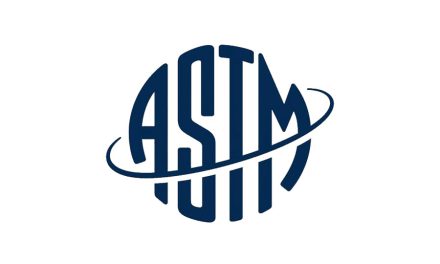Crude Oil Prices Could Reach $60
- A crude oil break-even price of $60-$65 is identified
- Weather forecasts turn even colder
- Gasoline is nearing a seasonal price low
- Natural gas completes the injection season only 6.8 per cent below the average storage level of the past five years.
Sincerely, Alan Levine Chairman, Powerhouse
 Click Table to Enlarge
Table covers crude oil and principal products. Other products, including residual fuel oil and “other oils” are not shown, and changes in the stocks of these products are reflected in “Total Petroleum Products.” Statistics Source: Energy Information Administration “Weekly Petroleum Status Report” available at www.eia.doe.gov
Click Table to Enlarge
Table covers crude oil and principal products. Other products, including residual fuel oil and “other oils” are not shown, and changes in the stocks of these products are reflected in “Total Petroleum Products.” Statistics Source: Energy Information Administration “Weekly Petroleum Status Report” available at www.eia.doe.gov
The Matrix
Weather becomes an important focus in November. New long-term forecasts suggest a growing risk for a cold December (previously, December was seen as being mild between a cold November and January.) WeatherBELL Analytics, a weather consultant put it this way, “Make no mistake, we have a rough winter forecasted, one that will cause, if we are correct, as much or more hardship as last year.”
Saudi Arabia has cut price to support its market share. At what price might other crude oil producers cry “Uncle” and cut production? The popular answer has been $80, but realistically, reaction would vary by well. Economics to be considered include drilling costs and time, production rates and estimated ultimate recovery. Moreover, a price signal might take up to six months to become actionable reflecting rig contracts or cash flow concerns. If a well’s production is hedged, the effect of a lower market price could be fully offset.
Analysts expect that rig counts may fall twenty percent from recent highs of 1,700 rigs by mid-2015. But even at current prices, many shale plays remain economically viable. A new price of $60-$65 has been identified as breakeven. This augers a new level of pricing for all oils through next year.
Supply/Demand Balances
Supply/demand data in the United States for the week ending October 31, 2014 were released by the Energy Information Administration.
Total commercial stocks of petroleum lost 2.4 million net barrels from inventories. Declines occurred in RBOB, other oils, and to a lesser degree in distillate fuel oil, kero-jet and propane.
The largest reductions occurred in RBOB where stock levels fell 1.4 million barrels. This reflected demand of 9.2 million barrels per day, an increase from the prior week’s estimate of 8.9 million barrels daily. U.S. exports of gasoline took 422,000 barrels daily from US supplies.
Gasoline production rose to 9.7 million barrels per day. This was a large increase from the previous week when 9.1 million barrels daily were refined, an indication of the “adjustment needed to correct the imbalance created by blending fuel ethanol and motor gasoline blending components.” Last year at this time, production was 8.4 million barrels per day.
Gasoline added about 300,000 barrels daily to demand for the week. Demand continues to be strong notwithstanding that we are nearing the seasonal price low.

Kero-jet supplies fell 0.6 million barrels during the report week.
Distillate fuel oil supplies dropped 0.7 million barrels during the report week. ULSD stocks lost 1.8 million barrels. Distillate fuel oil inventories with more than 500 ppm rose 1.0 million barrels. Demand declined to 3.5 million barrels daily.
Additions to stocks were only 1.5 million barrels. Residual fuel oil added 0.9 barrels to supply.
Increases were reported in supplies of crude oil, which rose 0.5 million barrels. This was the sixth consecutive weekly increase in inventories. Refinery turnarounds have been cutting demand for crude oil, adding to stocks. But last week, refinery utilization recovered. Refineries added 1.1 percentage points to service, reflecting the return to activity of facilities in the Midwest and on the Gulf Coast.
Commercial crude oil stocks were 380.2 million barrels, reflecting a gain of 0.5 million barrels during the report week. The gain was largest in the Midwest, where 2.1million barrels were added to inventory. The West Coast showed a corresponding decline of 2.5 million barrels. Cushing, OK stocks fell 0.6 million barrels, now at 20.8 million barrels.
Crude oil stocks are lagging last year’s level by 5.2 million barrels. Last year at this time, stocks were 10.6 million barrels higher than in October, 2012.
Crude oil imports were 6.7 million barrels daily during the report week, lower than the previous week by 426,000 barrels. They were 549,000 barrels less than last year. They lag by 4.4 per cent from the same four-week period last year.
U.S. crude oil production was 8.972 million barrels a day according to the latest report. The Lower 48 states produced 8.478 million barrels daily.
Crude oil inputs to refineries were higher by 356,000 barrels daily, running at 15.5 million barrels per day during the report week. Refinery utilization recovered to 88.4 per cent of capacity. This was a weekly gain of 1.8 percentage points.
A second weekly decline was seen in propane supplies (-0.1 million barrels.) Since March 21st, when stocks bottomed post-winter at 25.7 million barrels, propane has recovered 56 million barrels. There are 63.3 days’ supply in the system.
Propane inventories are 80.1 million barrels, 18.0 million barrels more than last year at this time. Gulf Coast stocks are 43.5 million barrels, down 0.5 million barrels for the week. Midwest stocks were down 0.6 million barrels at 26.9 million barrels.
Natural Gas
According to the EIA: Working gas in storage was 3,571 Bcf as of Friday, October 31, 2014. This represents a net increase of 91 Bcf from the previous week. Stocks were 238 Bcf less than last year at this time and 261 Bcf below the 5-year average of 3,832 Bcf.
Natural gas prices rose 77.3 cents between October 28th and November 5th. Powerhouse has previously noted that the rally was characterized by new daily highs and settlements well below the highs – “long upper shadows” in the language of Candlestick analysis. This is generally a bearish indicator.
This rally comes at a time when injections to underground storage have fully recovered from the very low levels recorded at the end of last season’s withdrawals. The injection report for October 31st shows that storage is only 6.8 per cent below the average storage for the past five years.
The high rate of natural gas production seems likely to persevere into 2015. This alone should put a damper on price except as very cold weather creates unexpected demand. And weather is difficult to predict over long time horizons.
Most traders fight last year’s battle and fears of a repetition of last year’s Polar Vortex are the best explanation of this latest rally. We expect the rally to fail under the weight of adequate inventories going into the natural gas withdrawal season of 2014-15. A four dollar handle will be hard to maintain without sustained cold or a failure of natural gas infrastructures similar to those of last year.
Futures trading involves significant risk and is not suitable for everyone. Transactions in securities futures, commodity and index futures and options on future markets carry a high degree of risk. The amount of initial margin is small relative to the value of the futures contract, meaning that transactions are heavily “leveraged”. A relatively small market movement will have a proportionately larger impact on the funds you have deposited or will have to deposit: this may work against you as well as for you. You may sustain a total loss of initial margin funds and any additional funds deposited with the clearing firm to maintain your position. If the market moves against your position or margin levels are increased, you may be called upon to pay substantial additional funds on short notice to maintain your position. If you fail to comply with a request for additional funds within the time prescribed, your position may be liquidated at a loss and you will be liable for any resulting deficit. Past performance may not be indicative of future results. This is not an offer to invest in any investment program.Vol. PH 03 NO. 45
Was this memo helpful? We’d like your feedback. Please respond to [email protected] Copyright © 2014 Powerhouse, All rights reserved.









